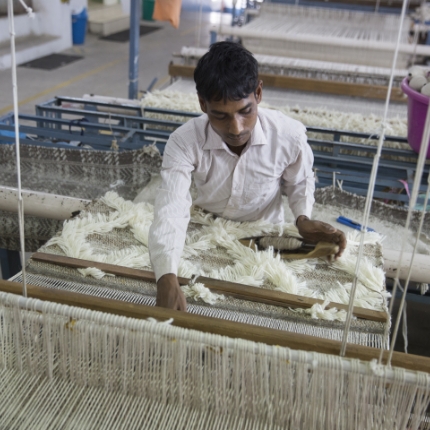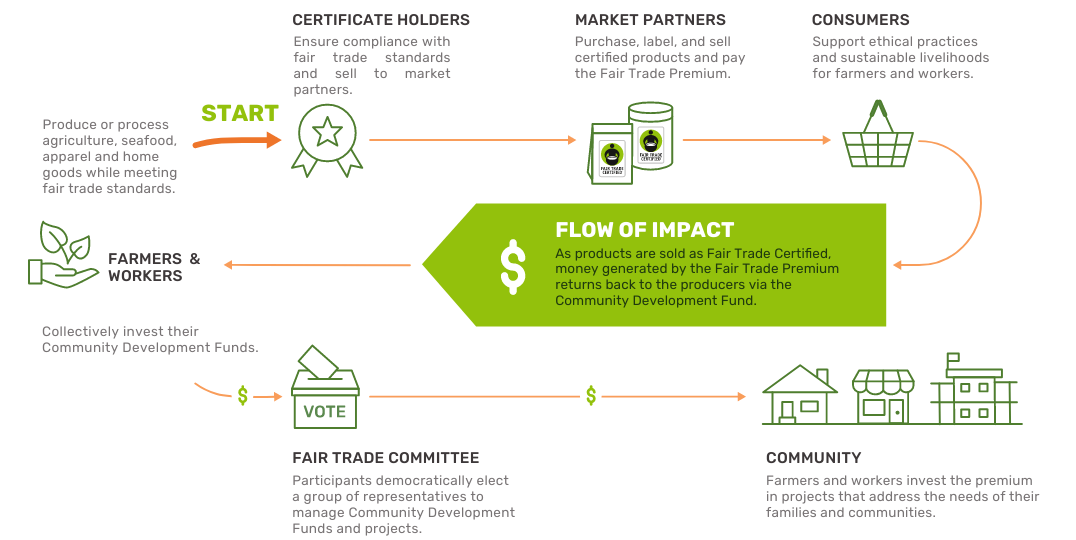How Does Fair Trade Work
Fair Trade USA™ takes a systematic approach to defining, measuring, and communicating the impact of our Fair Trade model.
It begins with our Theory of Change, a strategic vision outlining how Fair Trade programs contribute to meaningful, measurable improvements in people’s lives around the world.
This framework goes beyond supporting just farmers or fishers. It encompasses a wide range of stakeholders — business partners, traders, retailers, and consumers – who all contribute to driving systemic change.
The Theory of Change functions by Inputs > Outputs > Outcomes > Impact

What Does the Theory of Change Mean?
Fair Trade USA’s standards and strategic partnerships led to the development of tools (inputs) and the launch of programs (outputs) that benefit producers, workers, and consumers alike. These efforts result in outcomes that support key objectives, including:
- Building resilient, sustainable communities
- Promoting shared prosperity
- Creating mutually beneficial trade relationships
- Encouraging conscious consumption

Our Impact Management System (IMS)
To track the progress of our Theory of Change and ensure it translates into tangible results, Fair Trade USA developed an Impact Management System (IMS). This system helps measure, evaluate, and refine programs across a wide range of product categories.
The IMS supports continuous improvement and tracks progress in areas such as:
- Community Organization
- Access to Education
- Worker Empowerment
- Safe and Secure Workplaces
- Income Stability
- Consumer Understanding
- Ethical Supply Chains
- Businesses Success
By working in tandem, the Theory of Change and IMS help all stakeholders advance their sustainable sourcing and environmental, social and governance (ESG) commitments – and contribute to the broader mission of the United Nations Sustainable Development Goals (SDGs).
The Fair Trade Process
From certification to consumer purchase and reinvestment, the Fair Trade model creates a a virtuous cycle. This model helps improve the lives of workers, farmers, and fishers while strengthening communities and promoting transparency across the supply chain.
1. Certificate Holders
Ensure compliance with Fair Trade standards and sell to market partners.
2. Market Partners
Purchase, label, and sell certified products and pay the Fair Trade Premium.
3. Consumers
Support ethical practices and sustainable livelihoods for farmers and workers.
4. Flow of Impact
As products are sold as Fair Trade Certified, money generated by the Fair Trade Premium returns back to the producers via the Community Development Fund.
5. Farmers & Workers
Produce or process agriculture, seafood, apparel, and home goods while meeting Fair Trade standards and collectively investing their Community Development Funds.
6. Fair Trade Committee
Participants democratically elect a group of representatives to manage Community Development Funds and projects.
7. Community
Farmers and workers invest the premium in projects that address the needs of their families and communities.
Fair Trade Process Infographic
